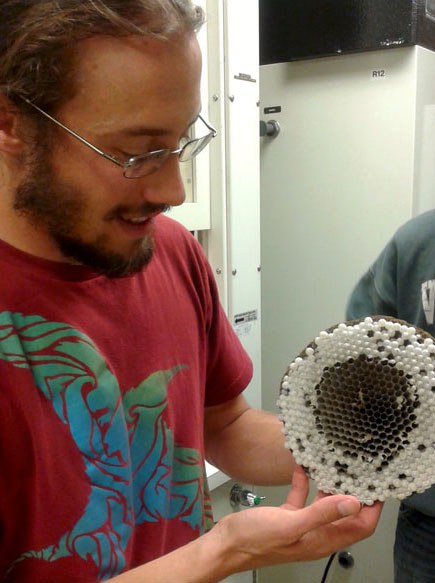Nathan Derstine, Ph.D. candidate in Entomology with Etya Amsalem’s Lab
Bees talk! They, like us, communicate when living in a social setting. Their conversations often happen in the dark and their words can be chemicals. Most importantly, these chemicals assist bees to perform tasks collectively and resolve reproductive conflicts. But how did chemical communication evolve in bees? The evolution of the compounds responsible for this process has been debated for years. Nathan Derstine, a PhD in Etya Amsalem's Lab at Penn State, is testing the hypothesis that these signals evolved as byproducts of physiological processes in solitary bees.
As part of a larger project, he will be trying to understand the evolution of chemical signals in the Dufour's gland, an abdominal gland in females that contains compounds functioning in various reproductive activities. Derstine will survey bees of different social organizations to record the identity, structure and quantity of the chemical components of said gland. He expects the chemicals that are present in the Dufour's gland of solitary bees to be structurally suited for functional roles, while the chemicals in eusocial bees to be structurally suited to serve as social signals.
Derstine states, "By surveying these compounds across bees of different levels of social organization, we are paving the way to rigorously tests ideas about the evolution of reproductive signaling."
 Bees are a new system for Derstine, which he finds interesting because of their diversity and levels of sociality present in different species. Besides, he said, "This couldn't be done in the same way in termites, for example, because all the species are highly eusocial."
Bees are a new system for Derstine, which he finds interesting because of their diversity and levels of sociality present in different species. Besides, he said, "This couldn't be done in the same way in termites, for example, because all the species are highly eusocial."
Once Derstine knows how compounds vary among bees, he can take advantage of genomic tools to identify the genes regulating the synthesis of Dufour's gland compounds. In the topic of bee communication, Nathan expects to add some words into the conversation.
By Ginamaría Román Echevarría


